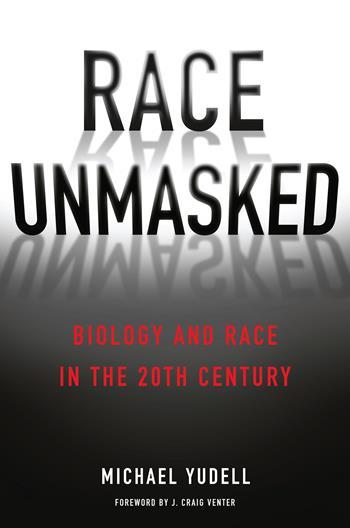There’s No Scientific Basis for Race—It’s a Made-Up LabelPosted in Africa, Articles, Health/Medicine/Genetics, History, Media Archive on 2018-03-13 18:09Z by Steven |
There’s No Scientific Basis for Race—It’s a Made-Up Label
National Geographic
April 2018 (The Race Issue)
By Elizabeth Kolbert
Photographs by Robin Hammond
 The four letters of the genetic code —A, C, G, and T—are projected onto Ryan Lingarmillar, a Ugandan. DNA reveals what skin color obscures: We all have African ancestors. |
It’s been used to define and separate people for millennia. But the concept of race is not grounded in genetics.
In the first half of the 19th century, one of America’s most prominent scientists was a doctor named Samuel Morton. Morton lived in Philadelphia, and he collected skulls.
He wasn’t choosy about his suppliers. He accepted skulls scavenged from battlefields and snatched from catacombs. One of his most famous craniums belonged to an Irishman who’d been sent as a convict to Tasmania (and ultimately hanged for killing and eating other convicts). With each skull Morton performed the same procedure: He stuffed it with pepper seeds—later he switched to lead shot—which he then decanted to ascertain the volume of the braincase.
Morton believed that people could be divided into five races and that these represented separate acts of creation. The races had distinct characters, which corresponded to their place in a divinely determined hierarchy. Morton’s “craniometry” showed, he claimed, that whites, or “Caucasians,” were the most intelligent of the races. East Asians—Morton used the term “Mongolian”—though “ingenious” and “susceptible of cultivation,” were one step down. Next came Southeast Asians, followed by Native Americans. Blacks, or “Ethiopians,” were at the bottom. In the decades before the Civil War, Morton’s ideas were quickly taken up by the defenders of slavery…
 Skulls from the collection of Samuel Morton, the father of scientific racism, illustrate his classification of people into five races—which arose, he claimed, from separate acts of creation. From left to right: a black woman and a white man, both American; an indigenous man from Mexico; a Chinese woman; and a Malaysian man. Photograph by Robert Clark PHOTOGRAPHED AT PENN MUSEUM |
…By analyzing the genes of present-day Africans, researchers have concluded that the Khoe-San, who now live in southern Africa, represent one of the oldest branches of the human family tree. The Pygmies of central Africa also have a very long history as a distinct group. What this means is that the deepest splits in the human family aren’t between what are usually thought of as different races—whites, say, or blacks or Asians or Native Americans. They’re between African populations such as the Khoe-San and the Pygmies, who spent tens of thousands of years separated from one another even before humans left Africa…
Read the entire article here.


